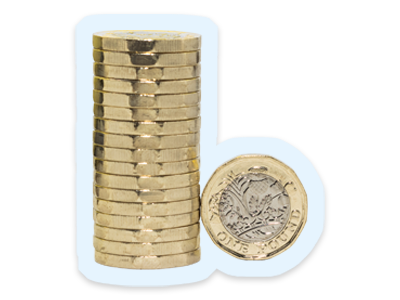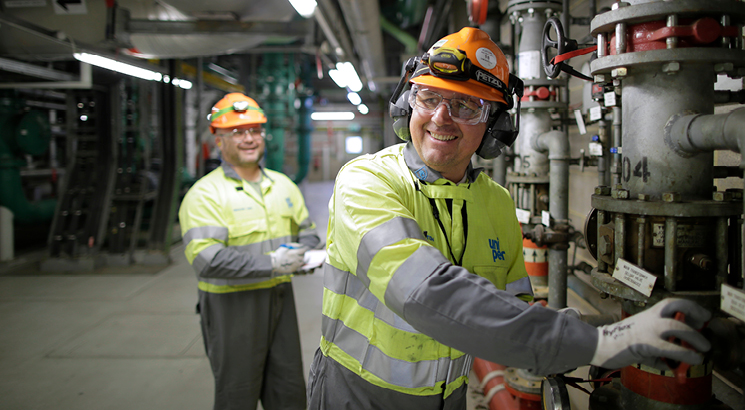How Scheme Pays could work for you
If your pension savings go over the Annual Allowance (AA) tax limit, you may have to pay a tax charge.
There are two ways that you can pay the charge. You can either:
- pay the amount required direct to HM Revenue & Customs (HMRC); or
- ask the Scheme to pay this charge for you, if you qualify. We call this 'Scheme Pays'
Whichever option you choose, you need to let HMRC know by 31 January, following the end of the tax year. This can be done via self-assessment.
You can read a brief summary of Scheme Pays and how it works below.
For more detailed information please check the Scheme Pays leaflet.

The Annual Allowance (AA) is the maximum amount of pension benefits that you can build up or save in a tax year, with the benefit of tax relief.
The most that you can save tax-free towards all your pension arrangements in a single tax year is the lower of either 100% of your earnings, or the AA for that tax year.
The standard AA for 2025/26 is £60,000.
Lower AA limits may apply in some circumstances. You can find more information about the pension tax limits, and where lower AA limits apply, on the tax allowances page or at www.gov.uk.
Please keep in mind that it is your responsibility to let HMRC know that you have exceeded the AA, and that you need to pay this tax. This can usually be done via self-assessment and there are strict deadlines for doing so.
If the amount you have built up in the Scheme, known as your Pension Input Amount (PIA) is more than the standard Annual Allowance, you will receive a Pension Saving Statement (PSS) from your pension administrator, Broadstone. This will tell you how much of your PIA might be liable for a tax charge.
Your PSS will be sent to you via post, on or before 6 October each year. You will also be able to view it online in your myESPS account.
Your Scheme PSS does not include details of any other pension arrangements you may have contributed to. For example, if you have used bonus waiver during the period shown on the PSS, you will need to add these contributions separately. You can request a separate PSS from Fidelity.
You can find out more about your PSS and how your PIA is calculated in the Scheme Pays leaflet.
If you are liable for an AA tax charge as outlined above, you can opt to pay this directly to HMRC.
Alternatively, you can choose to use Scheme Pays to pay an AA tax charge. In this case the tax charge will be paid out of the Scheme instead, and your retirement benefits will be reduced to cover the cost. You can find out how Scheme Pays will impact your benefits below and in your Scheme Pays leaflet.
You can use Scheme Pays to pay the full AA tax charge, or to pay a partial amount of the AA tax charge.
If you choose a partial amount, it is your responsibility to pay any outstanding balance to HMRC.
You can find out more at www.gov.uk/guidance/who-must-pay-the-pensions-annual-allowance-tax-charge.
There are 2 options for using Scheme Pays:
1. Mandatory Scheme Pays (MSP)
With this option, the Trustees become jointly liable with you for payment of the tax charge. In order to use MSP, you must meet the following criteria:
- Your total AA charge for the tax year across all schemes must be more than £2,000.
- Your Pension Input Amount (PIA) for the same tax year, for this Scheme, must exceed the standard AA.
- The correctly completed MSP form must be received by the Trustees before the earlier of 31 July in the following tax year to which the charge relates, and before the date you retire from the Scheme. You can request this form from your pension administrator, Broadstone.
2. Voluntary Scheme Pays (VSP)
With this option you are liable to pay the AA charge. The Trustees work within normal self-assessment deadlines, which means the tax charge has to be paid by 31 January, following the end of the tax year.
If you do not meet the criteria to use the MSP option, you can choose to use VSP.
VSP is only offered in respect of Uniper Group benefits, which means it can only be used by members who are still in the Scheme and have not taken their pension benefits, or transferred their pension benefits out of the Scheme.
To use Voluntary Scheme Pays, the correctly completed VSP form must be received by the Trustees before 31 December in the following tax year to which the charge relates, or the date you retire from the Scheme, whichever is earlier.
If you are planning to retire, your VSP form must be received by the Trustees before your retirement date.
You can find out more about how both of these options work, including examples, in your Scheme Pays leaflet.
If you choose to use Scheme Pays, which means you ask the Scheme to pay the tax charge for you, the Scheme must reduce the value of your pension benefits to cover this cost. This applies for both the MSP and the VSP options.
Charges applied
The amount of the tax charge that the Trustee pays on your behalf is noted on your pension record.
Interest is then applied on this amount from the date the tax is paid, until the earliest of:
- when you take your pension benefits
- when you transfer your pension benefits out of the Scheme, or
- when you die.
The interest rates determined by the Actuary and agreed by the Trustees are:
- 1 April 2016 – 31 March 2017: 2.3%
- 1 April 2017 – 31 March 2018: 2.1%
- 1 April 2018 – 31 March 2019: 2.7%
- 1 April 2019 – 31 March 2020: 2.7%
- 1 April 2020 – 31 March 2021: 2.1%
- 1 April 2021 – 31 March 2022: 2.0%
- 1 April 2022 – 31 March 2023: 3.2%
- 1 April 2023 – 31 March 2024: 5.9%
- 1 April 2024 – 31 March 2025: 6.5%
- 1 April 2025 – 31 March 2026: 5.9%
These rates have been set in line with the one-year spot rates on the fixed interest gilt yield curve rate plus 2% as at 1 April, which is consistent with the way members’ benefits are valued for the Scheme’s actuarial valuation.
For more details on these interest charges, please read the Scheme Pays leaflet.
How this is repaid
The amount you owe, based on the tax charge and interest, will then be deducted from your pension benefits, when you take them, transfer out or die.
The process for making the deduction depends on whether or not you have paid Additional Voluntary Contributions (AVCs).
- If you have paid AVCs and you have enough money in your AVC pot to pay your tax charge, the Trustees will use the money in your AVC pot to pay the tax charge.
- If you have paid AVCs, but do not have enough in your AVC pot to cover your tax charge, then a negative monetary figure will be recorded for the balance not covered by your AVCs and this will be deducted from your main Scheme benefits (i.e. your pension or lump sum, whichever you prefer).
- If you have not paid AVCs, and therefore do not have an AVC pot, then a negative monetary figure will be recorded for you and this will be deducted from your main Scheme benefits (i.e. your pension or lump sum, whichever you prefer).
You can get a Scheme Pays application form by contacting your pension administrator, Broadstone.
Please make sure you leave enough time to request and return your completed application form ahead of any application deadline.
If you are using Scheme Pays to cover a partial amount of your AA tax charge, it is your responsibility to pay any outstanding balance to HMRC.
You can also find support and guidance through the government-backed MoneyHelper service.
Visit the help and advice page for more details.
Neither the Trustees, the pension administrator, Broadstone, or Uniper can provide you with any financial or investment advice. They can give you factual information but not advice.
